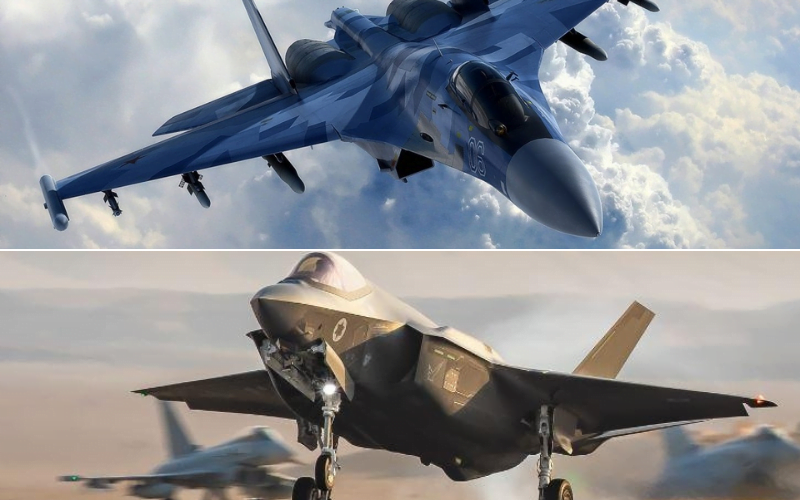The Su-35, like the F-35 and even the F-22, is certainly not a stealth aircraft. Nonetheless, the fighter jet has the strength to win any aerial battle: Russia is showing its muscles and boosting its Middle Eastern clout by selling Su-35 fighter jets to Egypt and Turkey, with Algeria perhaps following suit.
This is occurring as the US abandons Afghanistan and turns its attention away from the Middle East, focusing instead on East Asia as a prospective battle zone. As a result, Russia is mirroring the United States in its use of “fighter jet diplomacy” in the Middle East to gain additional allies and future clients.
Diplomacy with the Su-35?
Russian fighter aircraft sales, according to analysts of the Middle East military balance, are increasing the Kremlin’s influence and might in the region. Egypt received five SU-35 jets earlier this year and expects to get another 19 this year. If things go well, Turkey aims to purchase the Su-35. Algeria is in the same boat. Algeria will receive 14 Sukhoi-34 bomber jets as early as 2021. They are apparently interested in the sophisticated Su-57 fighter, and if the Russians reject them, they may order the Su-35 instead.
Dangerous Aircraft
Since 2014, the Sukhoi Su-35 Super Flanker has been a Russian workhorse. It has a wide range of applications and capabilities. It has the ability to destroy targets in the air, at sea, and on land.
Since 2014, the Sukhoi Su-35 Super Flanker has been a Russian workhorse. It has a wide range of applications and capabilities. It has the ability to destroy targets in the air, at sea, and on land. It has a range of 190 miles and a ceiling of 59,000 feet. The US Navy is concerned about the Su-35’s ability to shoot Oniks anti-ship cruise missiles. The Su-35 can carry up to eight tonnes of missiles, laser-guided and satellite-guided bombs, and other weapons.
Despite being a fourth-generation fighter with no stealth capabilities, the Su-35 possesses more dexterity and agility than the Su-27 and better avionics. In comparison to the Su-27, the radar has been upgraded, and the plasma ignition engines have higher thrust. The Su-35 has a top speed of 1,550 miles per hour.
The export of Su-35 fighter jets to the Middle East is another example of what I call “fighter jet diplomacy” that both Russia and the United States are involved in. When the US refuses to sell F-35 fighter jets to a country, that country’s air force will inevitably turn to another supplier — in this case, Russia. Israel, on the other hand, has taken notice and currently has 27 F-35s from the US. The United Arab Emirates wants F-35s, but Biden has been hesitant to complete the transaction, initially declaring it and then temporarily halting it.
Of course, the stealth F-35 is superior to the fourth-generation Su-35, but the Russian fighter is a welcome addition for countries like Turkey, Egypt, and possibly Algeria.
With the US out of Afghanistan, the Middle East and North Africa’s security landscape is shifting. Russia is establishing arms clients in the region, similar to what it did during the Cold War with arms deliveries. However, Russia is not sending tens of thousands of troops to the Middle East, and it has also evacuated all of its personnel out of Afghanistan, so its impact in the region should not be exaggerated.
Vladimir Putin, like the United States, is engaging in fighter aircraft diplomacy. By exporting its military systems, the Kremlin is making friends and causing additional problems for US allies like Israel, the United Arab Emirates, and Saudi Arabia.
